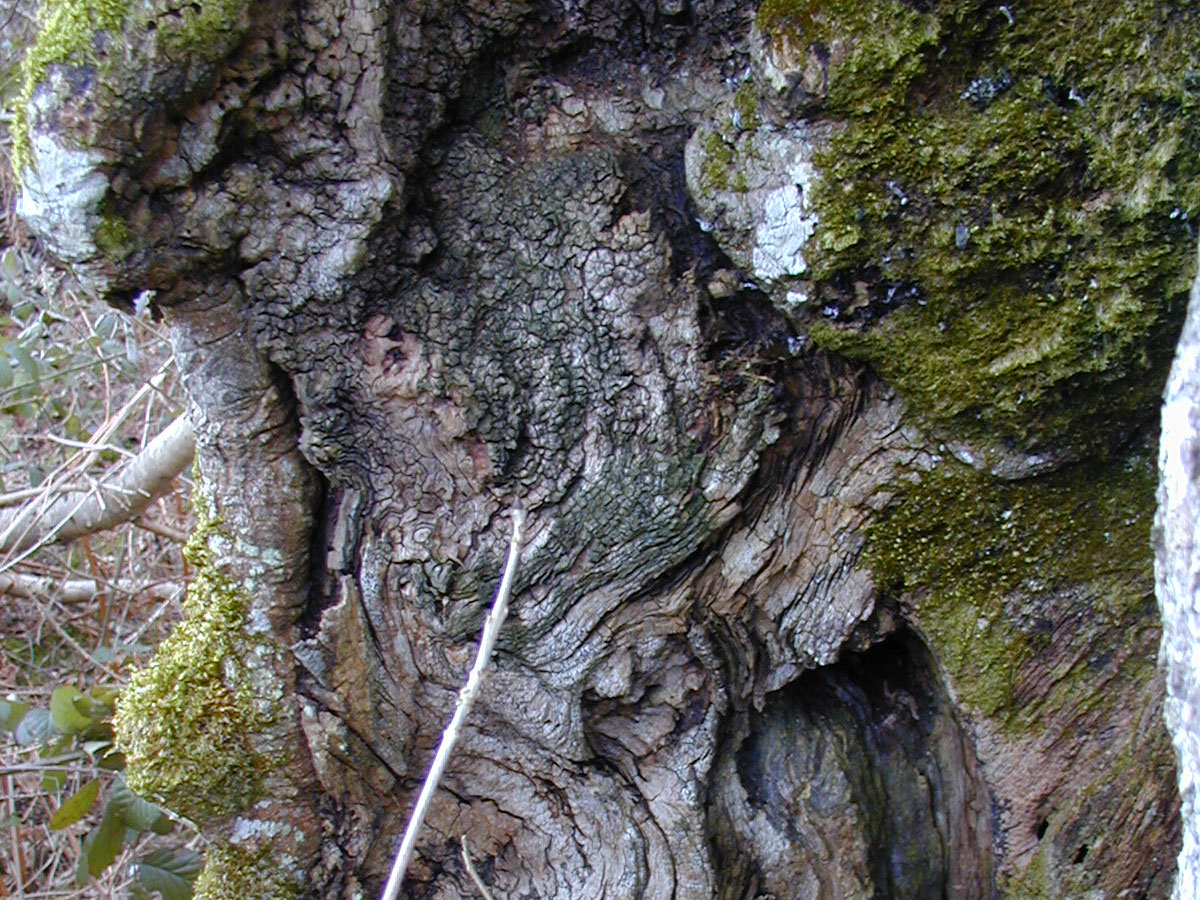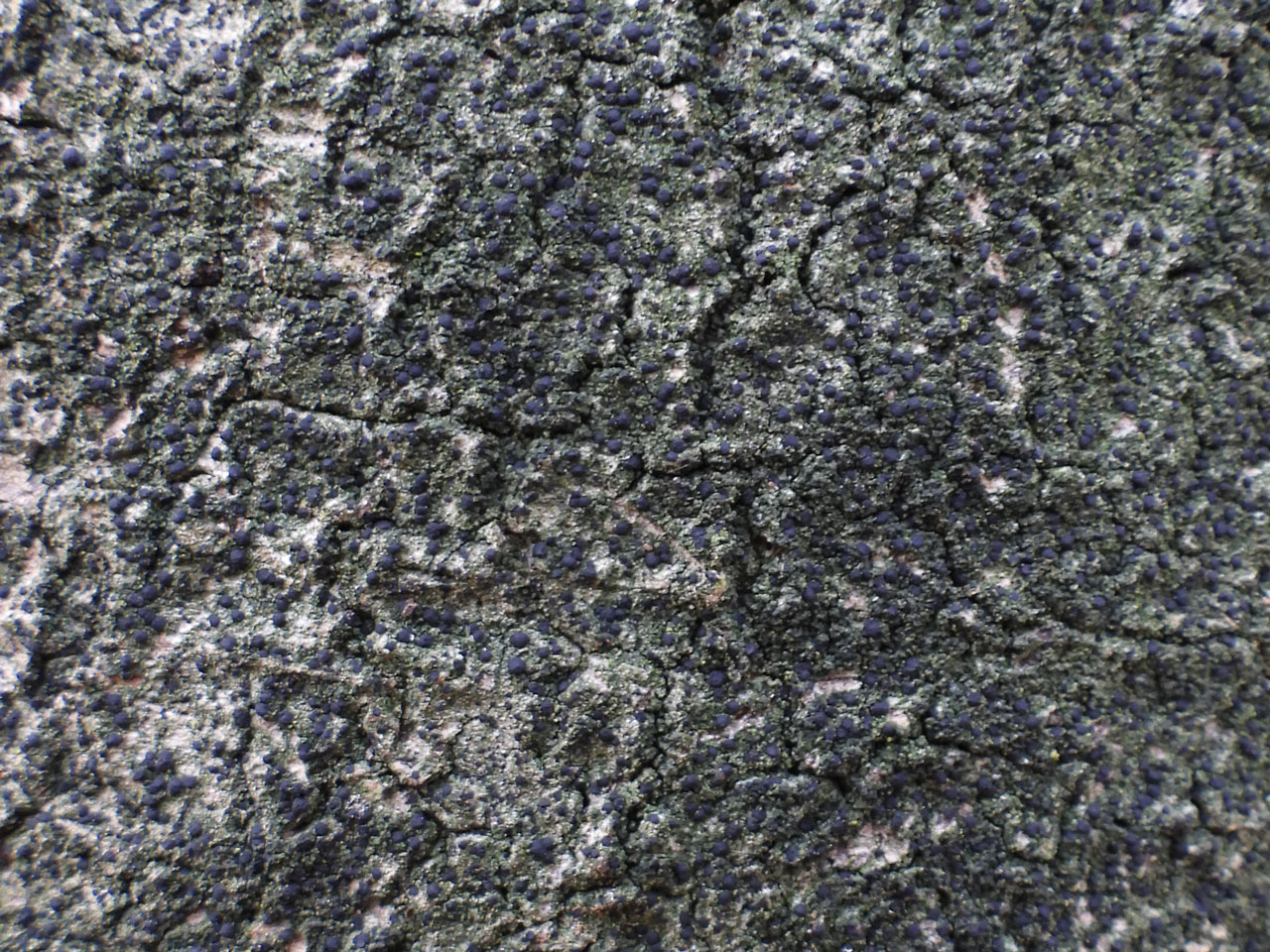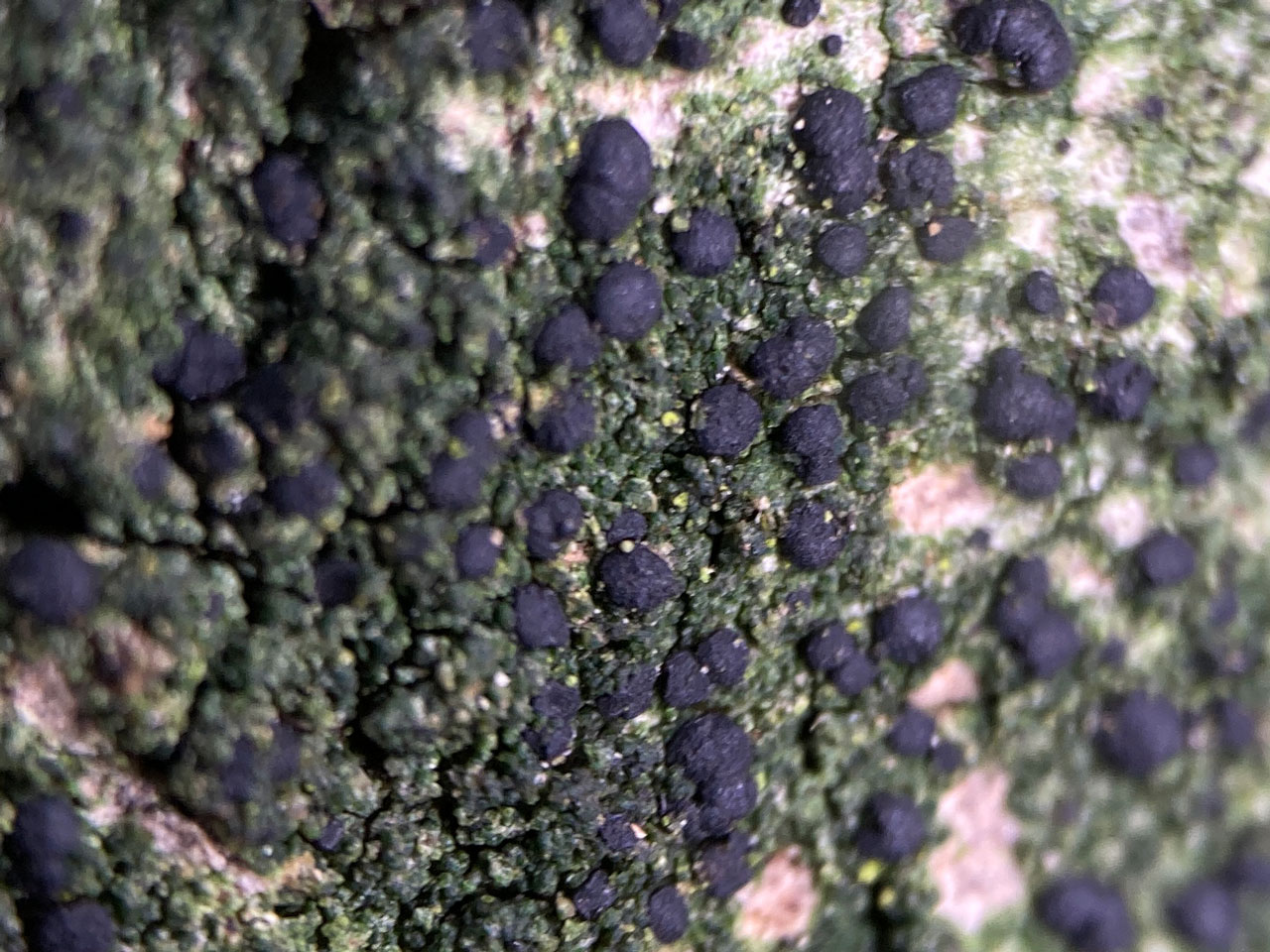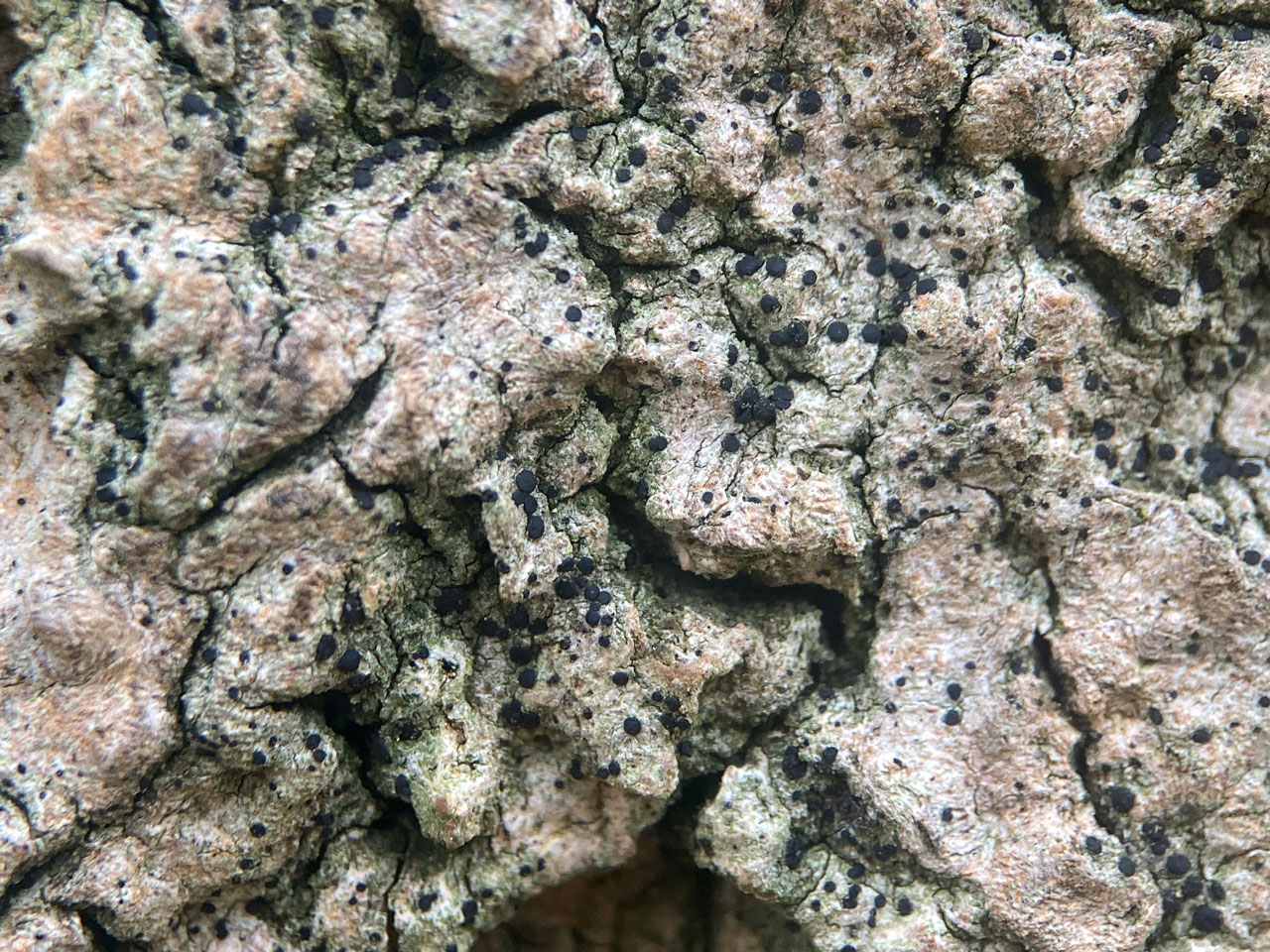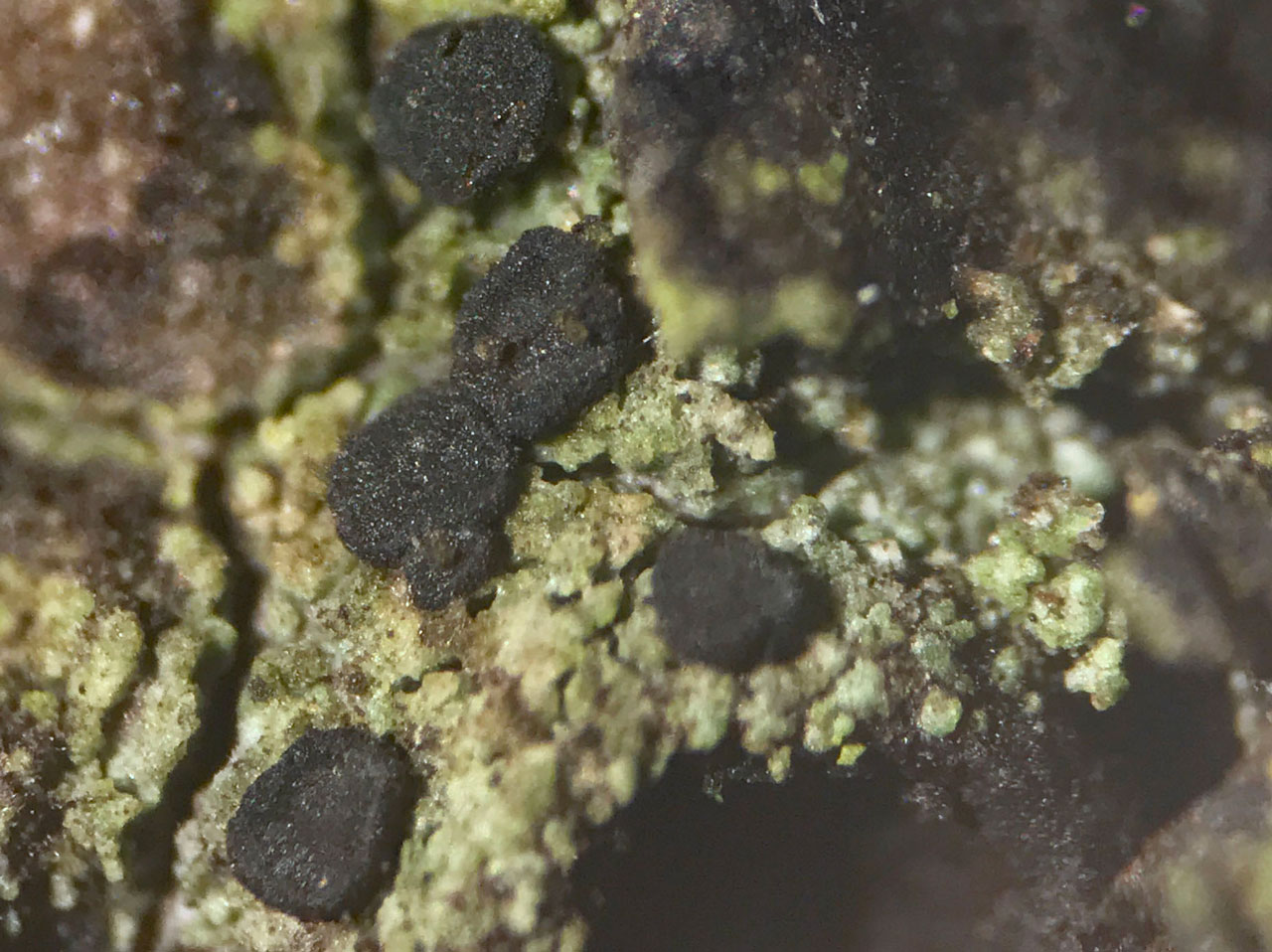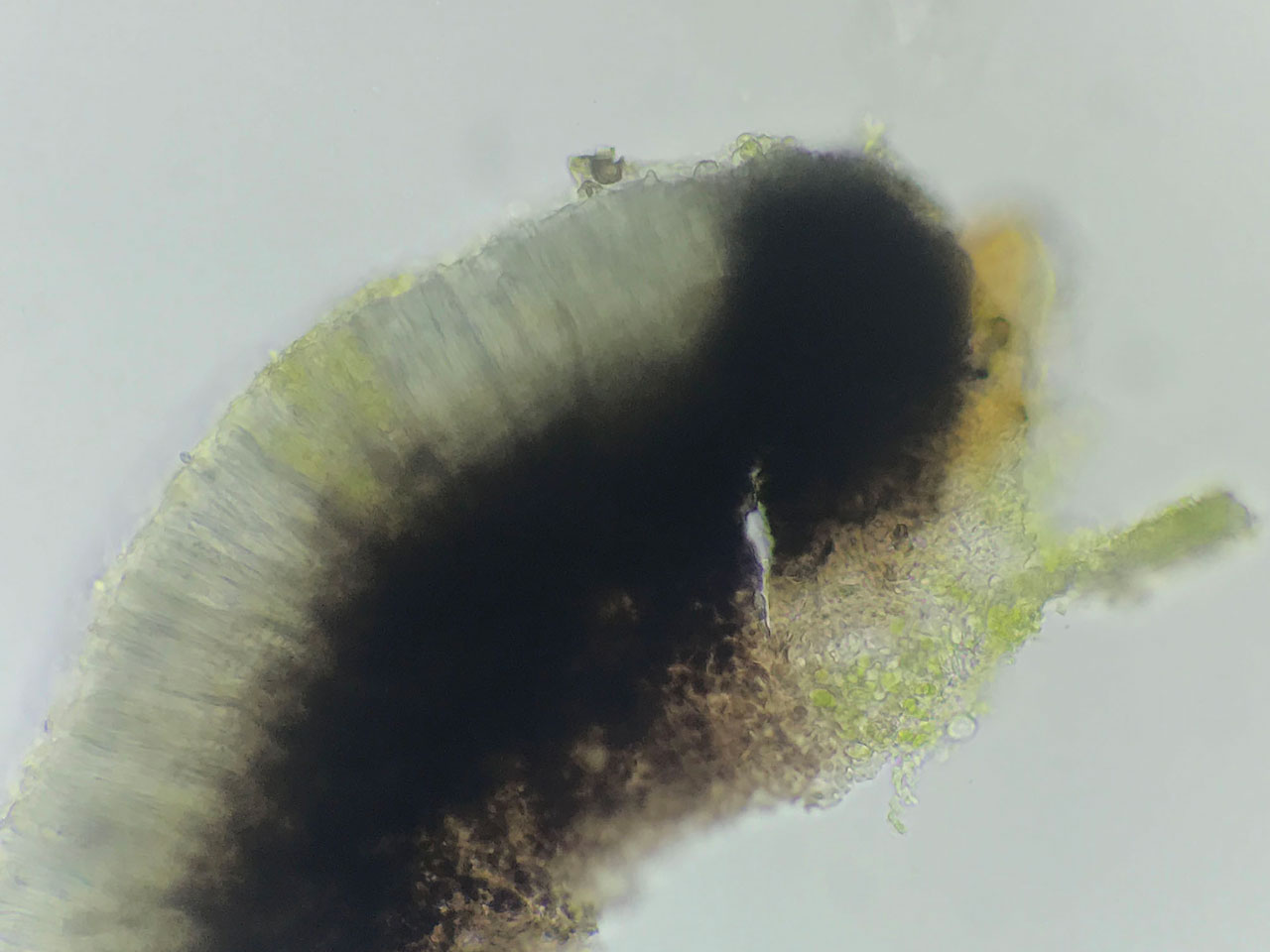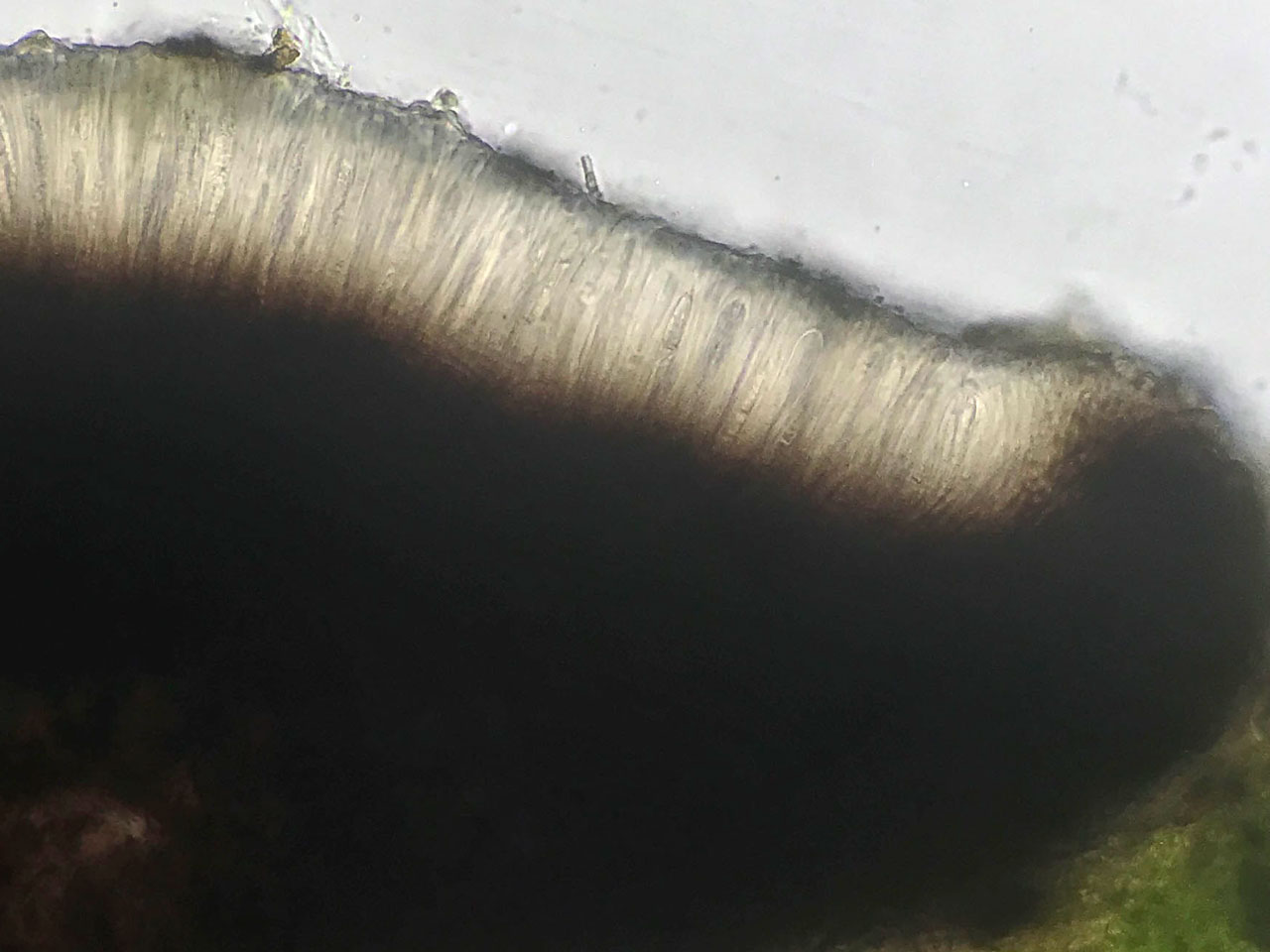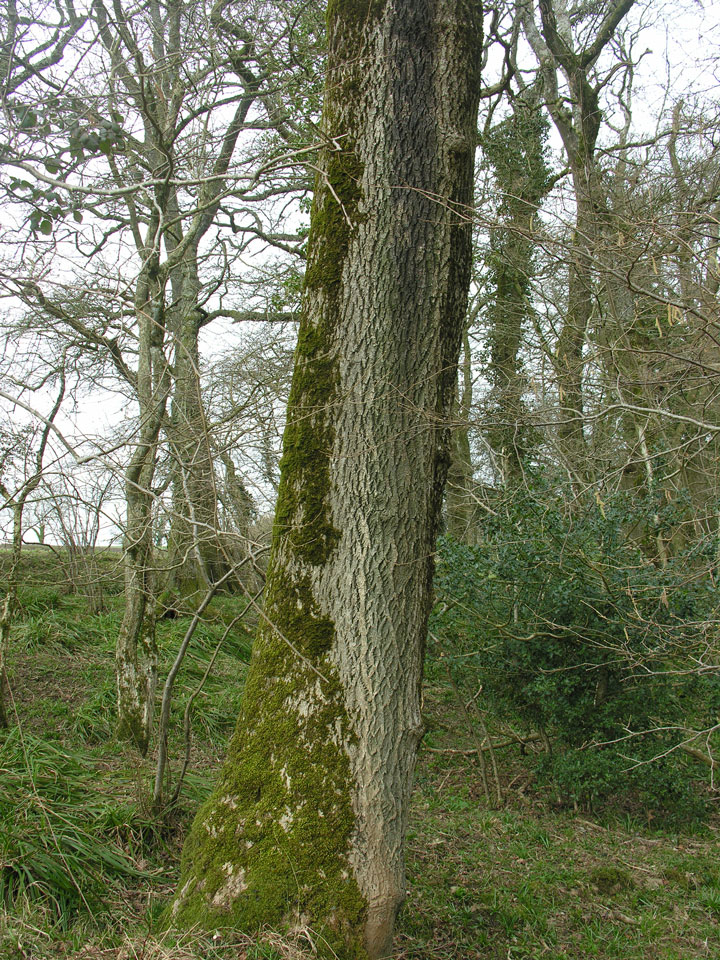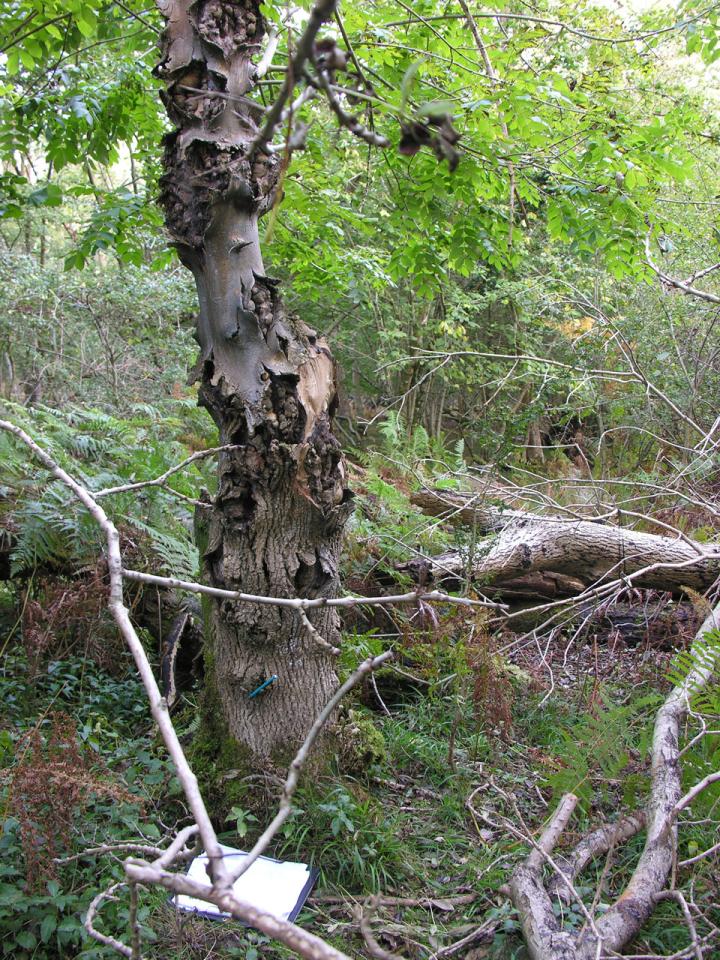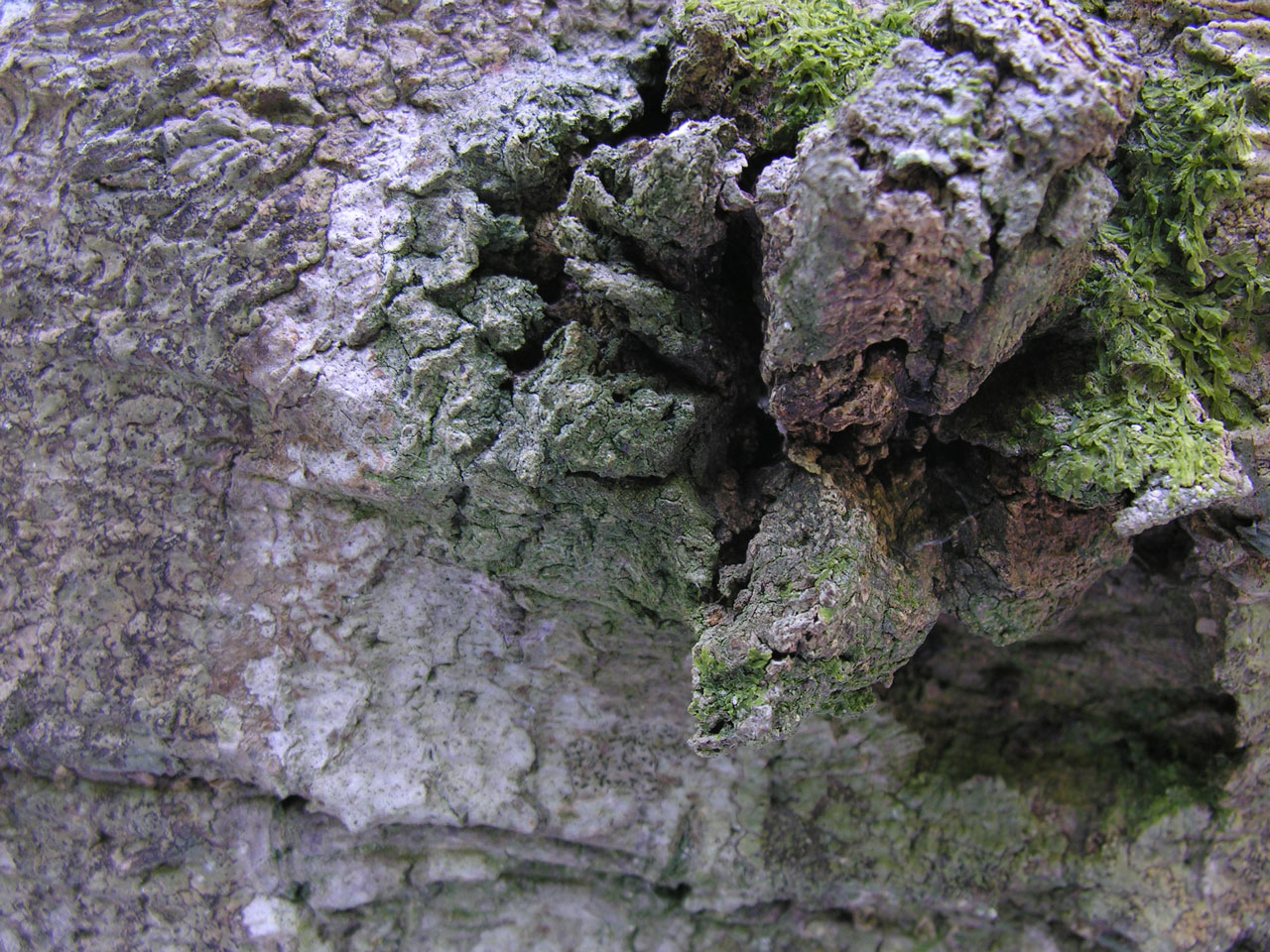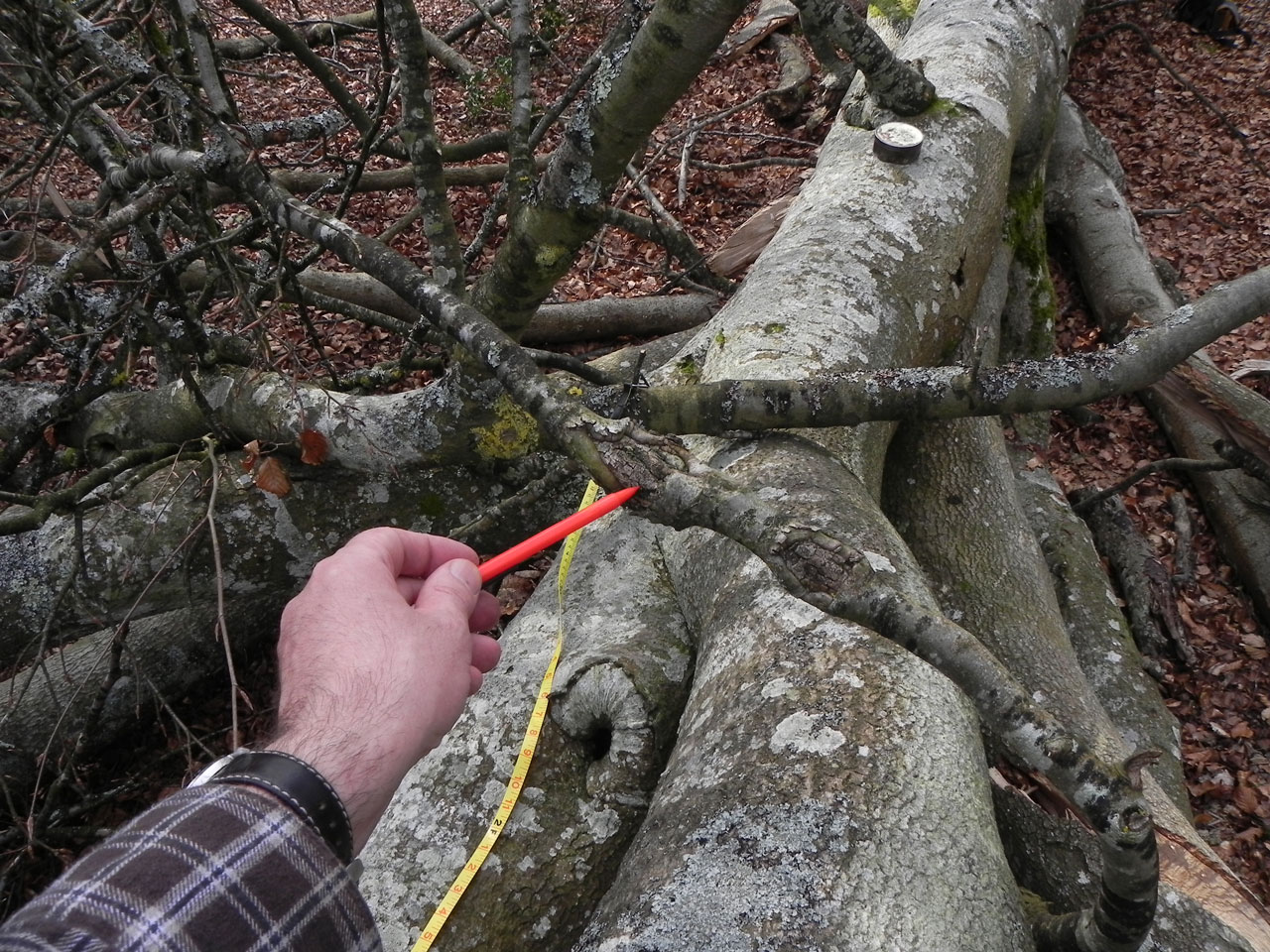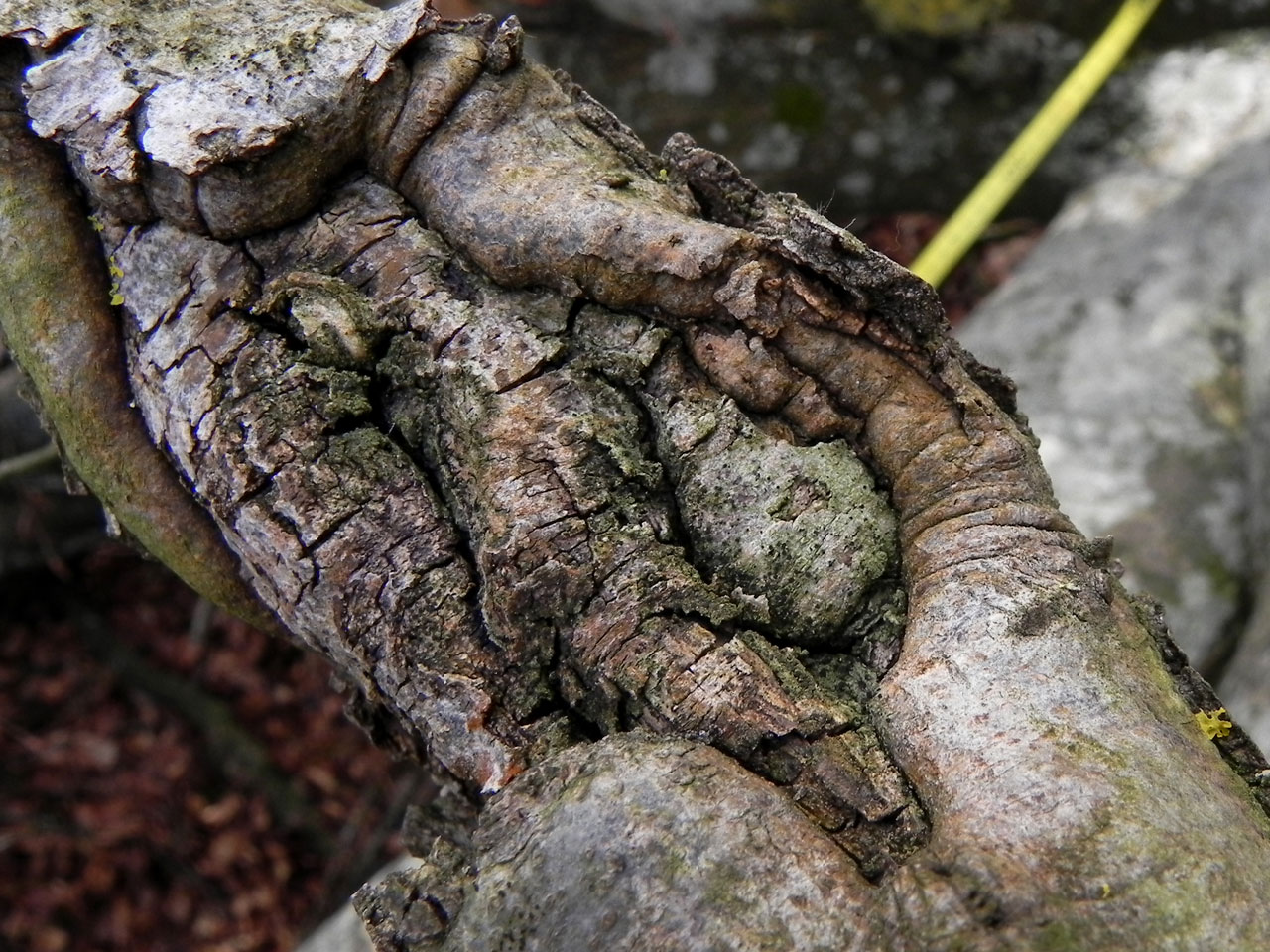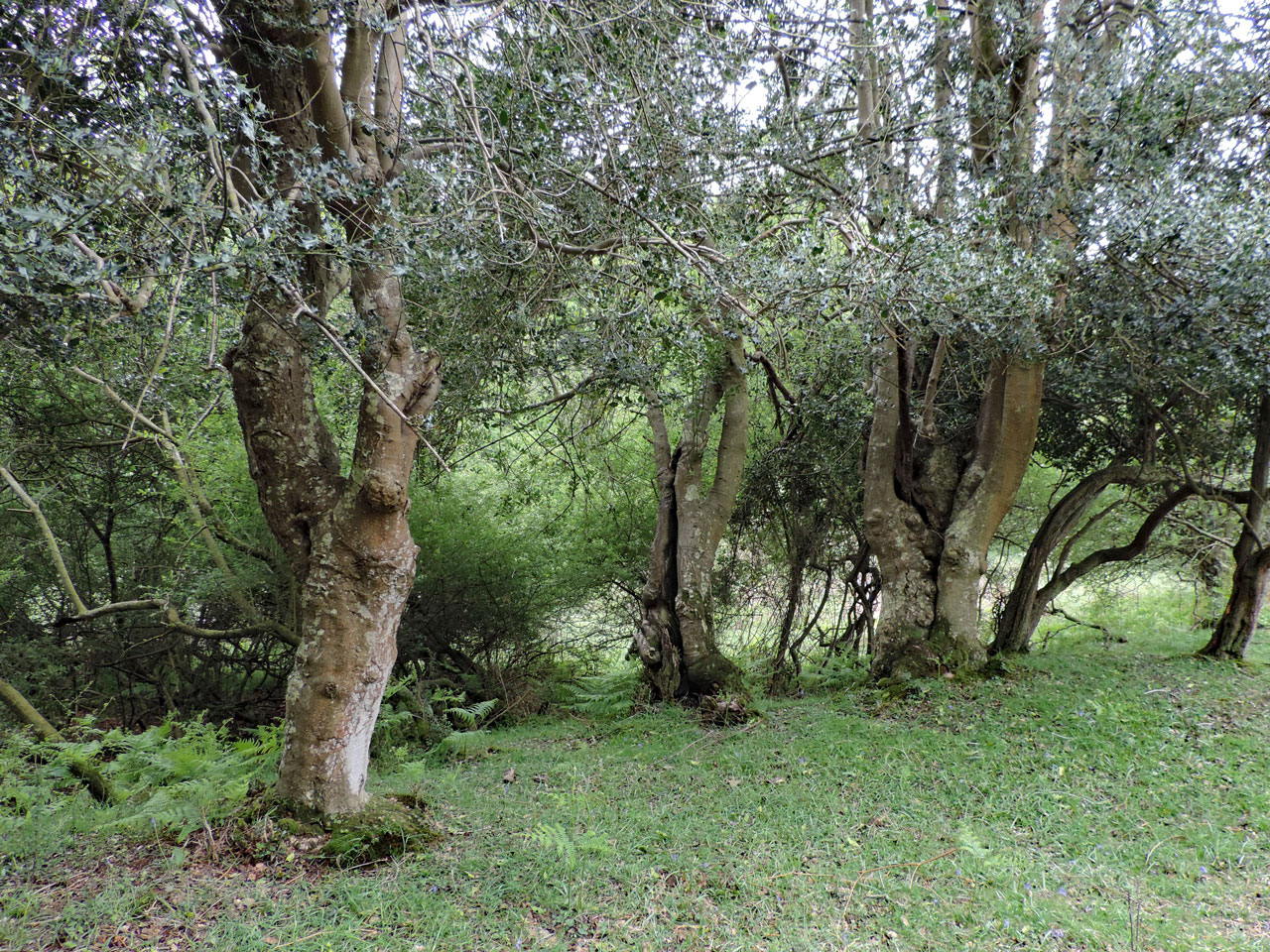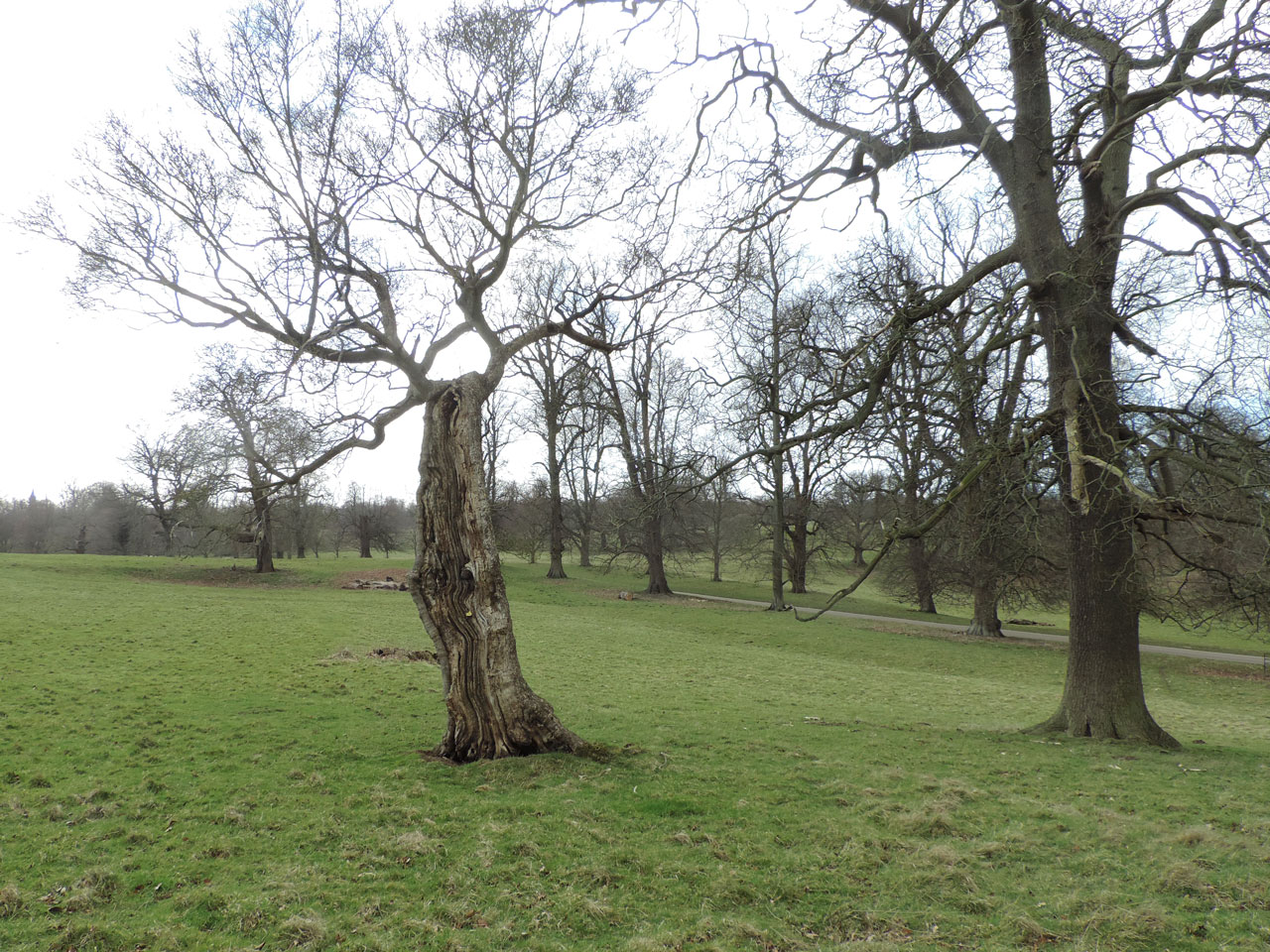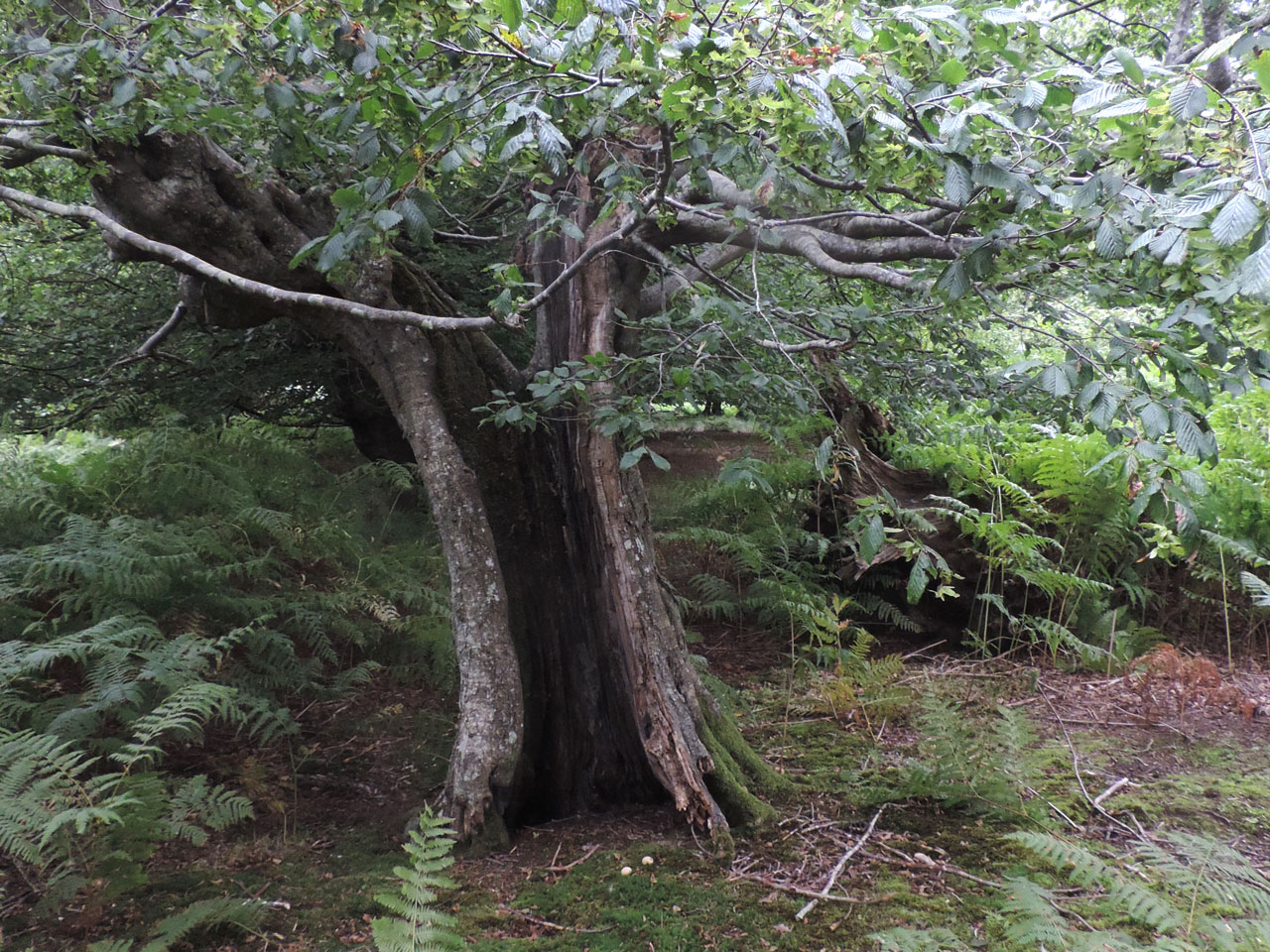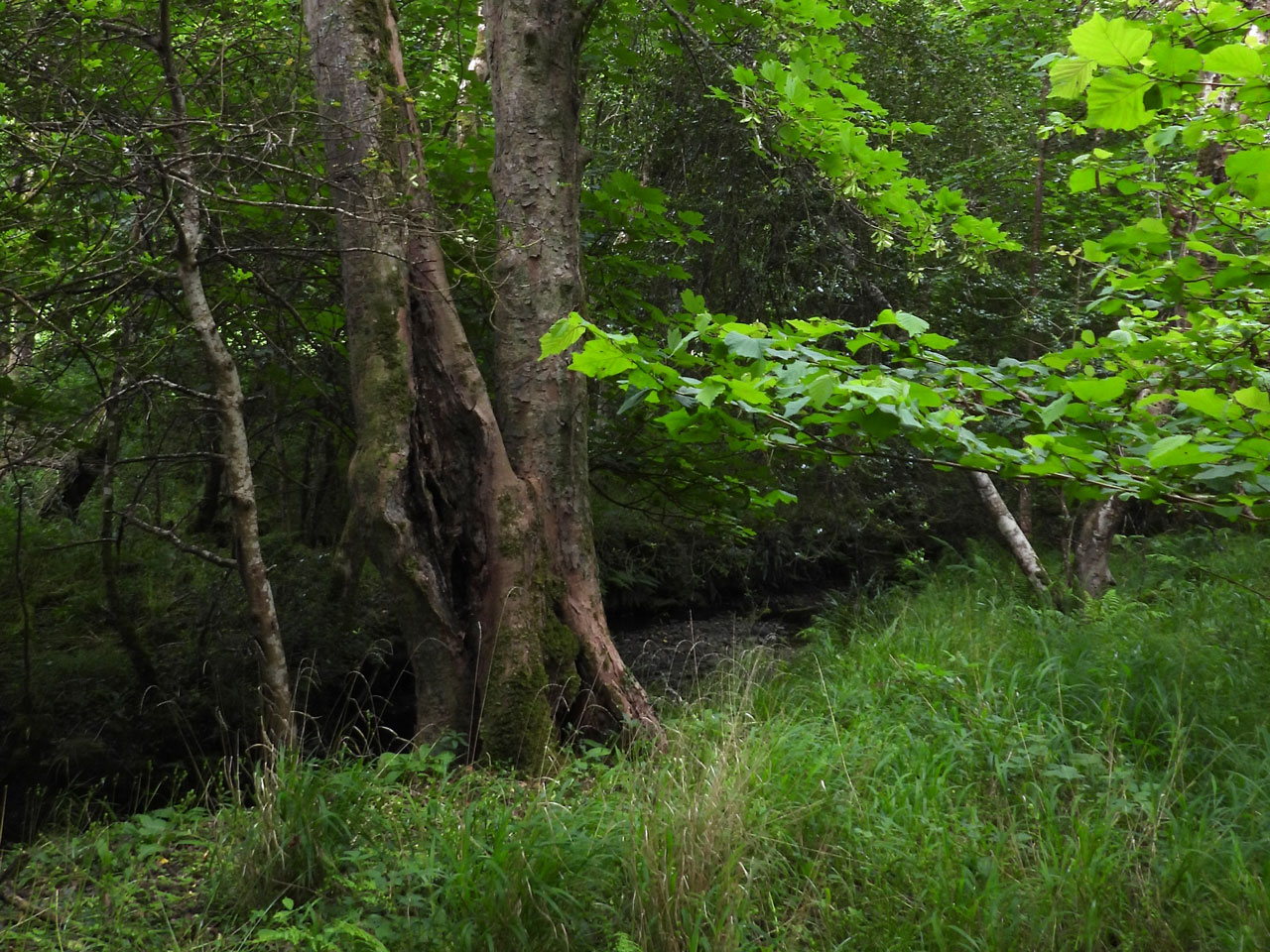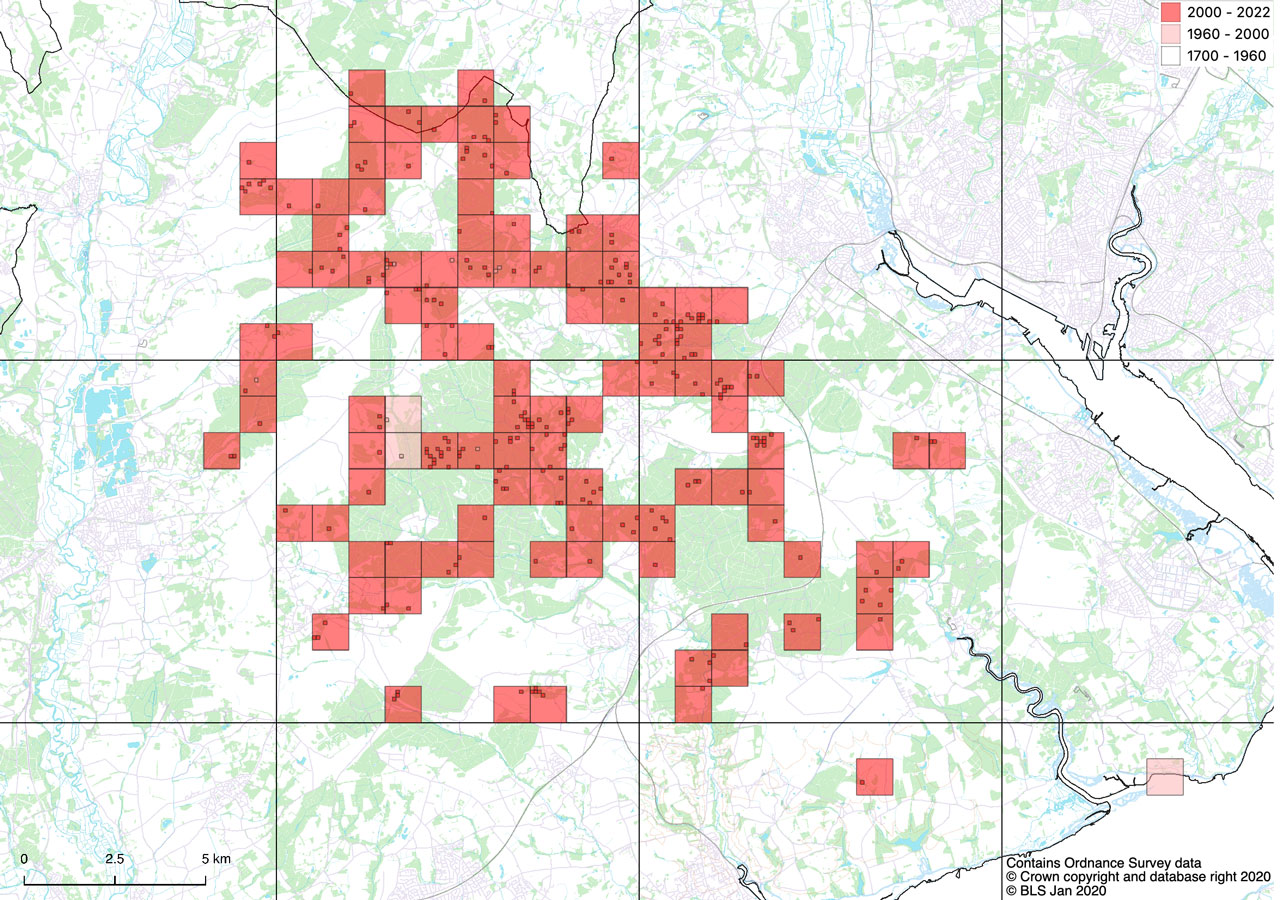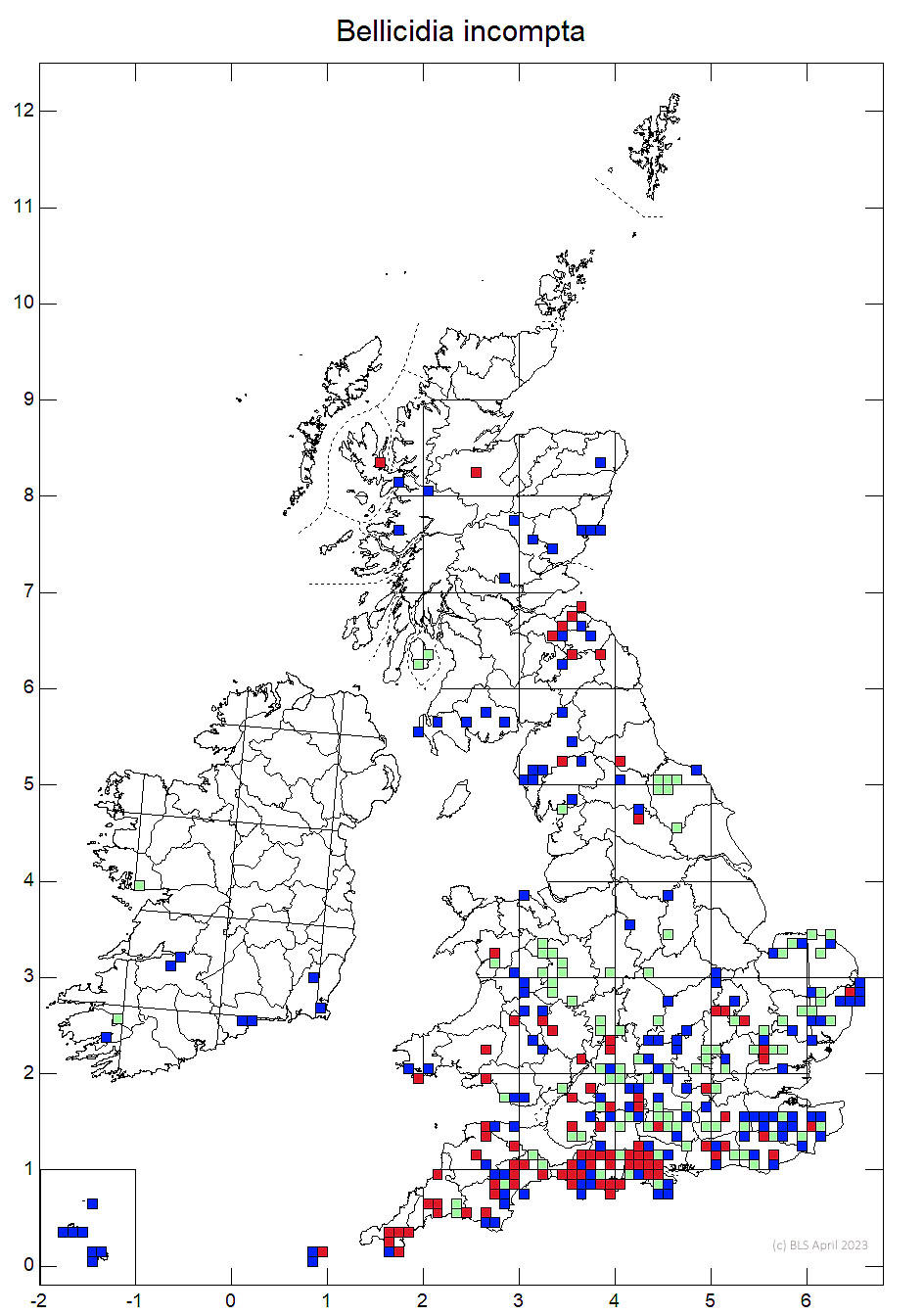Bellicidia incompta
This specialist of wound tracks (aka sap runs) on trees was most frequently found on veteran Elms, prior to the advent of Dutch Elm Disease. With the death of nearly old old Elms it is now almost entirely lost from this habitat and from large areas of the country. It was a specialist of wound tracks, not Elm trees, however, and occurs in similar habitat on many tree species, but especially Beech, Ash, Sycamore, Maple, Horse Chestnut and inside hollow Hollies. There is still a very large population estimated to be of over 10,000 occupied trees in the New Forest on Beech and Holly and much smaller populations, of less than 10 occupied trees elsewhere in south west England and south Wales in old woods and parklands.
Well developed thalli can be field identified by the combination of the wound track habitat, the dull green granular-verrucose thallus and the black apothecia. The dark internal pigmentation of the apothecia and the short (<25 μm long) cylindrical spores will confirm this.
Thallus dull green, grey-green, white or fawn, granular-verrucose; photobiont cells 5–12 (–14) μm diam. Apothecia (0.2–) 0.3–0.8 (–1) mm diam., dark purple-brown to black, sometimes becoming convex; margin thin, paler than the disc. True exciple and hypothecium dark red-brown, K+ purple, the outermost edge of the exciple sometimes colourless; hymenium 35–45 (–50) μm high, colourless or pale red; paraphyses 1.5–2 (–2.5) μm diam., unbranched or rarely forked above, not or only slightly swollen at the apices (to ca 3 μm diam.). Ascospores 15–25 (–27) × 2–2.5 μm, (0-) 3 (-5)-septate, cylindrical. Pycnidia ± immersed, to 200 μm diam., black, walls red-brown, K+ purple; conidia 5–9 × 2–2.5 μm, 0 (-1)-septate, cylindric-ellipsoidal.
Recognised by the combination of the wound track habitat, the dull green granular-verrucose thallus and dark internal pigmentation of the apothecia. Occasionally found sterile, although the inconspicuous pycnidia with K+ purple walls are usually present.
In high pH wound tracks on the bark or lignum of mainly veteran trees, but also sometimes slow growing suppressed younger trees. Often forming extensive dark green-grey uneven vertical streaks along wound seepage tracks, sometimes on exposed roots of Elm on cliff faces. Old Elm trees were its primary recorded habitat previously, but much declined owing to demise of old Elms since by the end of the 20th century. Now mainly found on the bark or lignum of wounded Beech, Horse Chestnut, Ash, Holly, Sycamore, Maple and Hornbeam. Found in both old growth pasture woodlands, parkland and on field and wayside trees.

Originally throughout S. England, extending N. through mid Wales to Scotland (to Skye in the west and N. Aberdeenshire in the east); rare in Ireland, now largely lost from the north and west of this area, with no recent Irish records, and now most frequent in S.W. England.
In many surviving sites B. incompta has been recorded on single trees. It is not clear whether these represent viable populations or non-viable relics of a former more extensive Elm inhabiting meta-populations. Sites with more than one occupied tree are more likely to represent viable populations. Edwards (2006) only recorded six sites as having two or more trees outside of The New Forest in Britain, all in southwest England. The total is now likely to be over 20 sites, but has not been analysed, but now includes one Welsh site, Dynefor Park, Carmarthenshire. The cluster of post 2000 records in SE Scotland, were largely recorded from Wych Elms that survived Dutch Elm Disease into this century but were in the main ill or dying when recorded (Edwards, 2006). The noted occurrence of B. incompta on damaged hedge stools in Cornwall (V. Giavarini, pers. com.) and on cankers in sub-canopy branches in New Forest Beeches (Sanderson & Cross, 2012) hints at hidden populations. This implies that viable meta-populations may be more widespread than the current data suggests.
The largest surviving meta-population by far is in the just under 3000ha old growth pasture woodlands of the New Forest, Hampshire (see map in the photo gallery). This population has been recorded from 106 1km squares post 2000, with localised records in 272 100m squares spanning 63 woods. B. incompta is found on both Beech and Holly, mainly in wound tracks on bark on the former and on lignum inside hollow Holly. The latter are mainly old pollards but the occupied Beech are predominantly veteran maiden trees. Sanderson (2009) sampling old Beech stands for Enterographa elaborata found that B. incompta occupied 6.7% of Beeches with wound tracks, giving a rough estimate of 630 to 1260 occupied Beech trees in the New Forest (and an estimate of 11500 to 23200 Beech trees with wound tracks), giving an indication of the scale of habitat required to support large B. incompta populations. The old Hollies are likely to support a similarly sized population.
The population of this lichen has seriously declined since the onset of Dutch Elm Disease, with a large range contraction as well, with potentially sustainable populations only surviving in the south west of it pre disease range. Ash Dieback will lead to further losses in some landscapes in the south west and it was assessed as at medium risk from by Ash Dieback by Sanderson & Lamacraft (2022). Increased ammonia pollution, shade from uncontrolled Ivy, denser shade in woods and safety fellings of wounded trees are potential threats to surviving trees.
Britain: Vulnerable
Scotland: Priority Taxon for Biodiversity in Scotland
Wales: Critically Endangered & Section 7 species
England: Section 41 species
Cannon, P., Ekman, S., Kistenich, S., LaGreca, S., Printzen, C., Timdal, E., Aptroot, A., Coppins, B., Fletcher, A., Sanderson, N. & Simkin, J. (2021). Lecanorales: Ramalinaceae, including the genera Bacidia, Bacidina, Bellicidia, Biatora, Bibbya, Bilimbia, Cliostomum, Kiliasia, Lecania, Megalaria, Mycobilimbia, Phyllopsora, Ramalina, Scutula, Thalloidima, Toninia, Toniniopsis and Tylothallia. Revisions of British and Irish Lichens 11: 1-82.
Edwards, B. (2006) Bacidia incompta Species Dossier. Salisbury: Plantlife International
Sanderson, N. A. (2009) A Species Dossier for Fancy Writing Enterographa elaborata in Britain. A report by Botanical Survey & Assessment to Natural England.
Sanderson, N. A. & Cross, A. M. (2012) A fallen beech in ancient pasture woodland in the New Forest, Hampshire. British Lichen Society Bulletin. 111: 54 – 60.
Sanderson, N. A. and Lamacraft, D. (2022). Impacts of Ash Dieback Hymenoscyphus fraxineus (Chalara) on priority lichens and potential mitigation options. Natural England Commissioned Reports, number 428. Link.
Text by Neil A. Sanderson based on Cannon et al (2021)
